June











June











E ach year on the Friday before Memorial Day in the United States, members of the American Legion Family hand out small paper or silk poppies for people to wear in honor of our past, current and future veterans. It’s celebrated as Poppy Day, and this year it falls on Friday, May 26, 2023.
The origins of Poppy Day come from World War I, specifically starting in France and Belgium. It is believed that the rubble left by the war there enriched the soil with lime, and the poppy flourished during and after the war. Shortly after seeing the beautiful, bright red flowers on the front line, Lieutenant Colonel John McCrae, M.D penned the haunting poem “In Flanders Fields.” The poppy soon became a symbol for all the blood shed during the war.
On September 27, 1920, the American Legion began to use the poppy as the official flower to memorialize soldiers from WWI, and then began nationally distributing them in 1924. Today, the flower honors all the living and those who have fallen in service to our country. Your donation helps support the medical and financial needs of all veterans, active-duty military personnel and their families.
Ways to participate in honoring our veterans on Poppy Day:
• Wear a red poppy and explain it to people who ask
• Distribute poppies (see website below for details)

• If you accept a poppy from someone, make a donation
• Collect donations for the Poppy Program (see website below for details)
• Share on social media
Source: American Legion Auxiliary. “National Poppy Day.” https://www.legion-aux.org/national-poppy-day








monument and more engraved benches can be found throughout the memorial. Additionally, over 1800 granite pavers cover the floor of this tribute.






As Americans we owe a great debt to the men and women who have served our country. At Johnson Monument, we believe it is important to help local communities and individual families honor and memorialize our area veterans. Since 1917, Johnson Monument has completed dozens of civic projects to do just that, and several of these memorial parks can be found within just 60 minutes of Chippewa Falls.
Ridgeland Veterans Memorial, located on the north side of Ridgeland along Hwy 25 and Cty Rd AA, was completed in 2020 with the help of the Ridgeland America Legion Auxiliary Unit. Three large, jet-black granite tablets respectively display bronze medallions for each branch of the military, a sandblasted American flag, and a sandblasted Purple Heart. Several granite benches line the memorial and two walls also stand to commemorate area individuals who served in the military.
 By Johnson Monument
By Johnson Monument
sided structure with the names and conflicts of the veterans captured, missing, or killed in action. This is topped with the bronze "Fallen Soldier" rifle and helmet sculpture. Three curved-seat benches face the POW * MIA * KIA monument and more engraved benches can be found throughout the memorial. Additionally, over 1800 granite pavers cover the floor of this tribute.
The Citizen Soldier Monument, along is a great addition to the Cadott Veterans Tribute. This monument was created to honor the Citizen Soldiers who showed courage and strength on 9/11, including all of the firefighters, EMT's, police officers, nurses, doctors, and anyone who came to the aid of those in need. Spanning over 14 feet long and 10 feet high, each side of this massive monument is hand-etched with scenes from some of 9/11's most poignant moments. Topping monument is an eternal flame that burns 365 days a year.
The multifaceted Bloomer Veterans Memorial, along HWY 40 on the north side of Bloomer, was commissioned by the Bloomer Visitor Center and Veterans Committee and completed in 2006. Five jetblack granite tablets, each eight feet long by five feet tall and set on matching granite bases, are engraved with veterans' names and conflicts. In the center of the memorial is a six-sided structure with the names and conflicts of the veterans captured, missing, or killed in action. This is topped with the bronze "Fallen Soldier" rifle and helmet sculpture. Three curved-seat benches face the POW * MIA * KIA monument and more engraved benches can be found throughout the memorial. Additionally, over 1800 granite pavers cover the floor of this tribute.
The multifaceted Bloomer Veterans Memorial, along HWY 40 on the north side of Bloomer, was commissioned by the Bloomer Visitor Center and Veterans Committee and completed in 2006. Five jetblack granite tablets, each eight feet long by five feet tall and set on matching granite bases, are engraved with veterans' names and conflicts. In the center of the memorial is a six-sided structure with the names and conflicts of the veterans captured, missing, or killed in action. This is topped with the bronze "Fallen Soldier" rifle and helmet sculpture. Three curved-seat benches face the POW * MIA * KIA monument and more engraved benches can be found throughout the memorial. Additionally, over 1800 granite pavers cover the floor of this tribute.
The multifaceted Bloomer Veterans Memorial, along HWY 40 on the north side of Bloomer, was commissioned by the Bloomer Visitor Center and Veterans Committee and completed in 2006. Five jetblack granite tablets, each eight feet long by five feet tall and set on matching granite bases, are engraved with veterans' names and conflicts. In the center of the memorial is a six-


The Citizen Soldier Monument, along HWY 29 and HWY 27 in Cadott, is a great addition to the Cadott Veterans Tribute. This monument was created to honor the Citizen Soldiers who showed courage and strength on 9/11, including all of the firefighters, EMT's, police officers, nurses, doctors, and anyone who came to the aid of those in need. Spanning over 14 feet long and 10 feet high, each side of this massive monument is handetched with scenes from some of 9/11's most poignant moments. Topping the monument is an eternal flame that burns 365 days a year.

Johnson Monument takes pride in our communities and our neighbors. It is an honor to be able create civic memorials like those in Ridgeland, Bloomer and Cadott in order to recognize the our veterans. We have many ways we can work with individual families to commemorate a loved service to our country. At Johnson Monument we don't write your story, we help future generations remember your story.
in Ridgeland, Bloomer, and Cadott in order to recognize the our veterans. We have many ways we can work with individual families to commemorate a loved service to our country. At Johnson Monument we don't write your story, we help future generations remember your story.
Johnson Monument takes pride in our communities and our neighbors. It is an honor to be able to create civic memorials--like those in Ridgeland, Bloomer, and Cadott--in order to recognize the service of our veterans. We have many ways we can work with individual families to commemorate a loved one’s service to our country. At Johnson Monument, we don't write your story, we help future generations remember your story.
Is there is a connection between a younger veteran's time in the service and their contracting dementia after being discharged? Maybe.
Isn’t dementia or Alzheimer’s disease an older person’s disease? Yes, we know the greatest risk factor for Alzheimer’s is being over the age of 65, but every person with a brain is at risk for dementia, at any age.
When a younger veteran is admitted to a memory care facility before they turn 65 years of age, they’ve no doubt struggled due to an early onset of some type of brain injury-induced dementia.
Veterans are significantly more at risk for a diagnosis of dementia than those who haven’t served. What are the risk factors for veterans who served? Traumatic brain injury, post-traumatic stress, blast-induced neurotrauma, successive concussion syndrome, and depression. A daunting list, right?

Damages to the brain resulting from stresses once a veteran is no longer in service can add up. While depression can linger for years, it often leads to drinking or drugs, damaging the brain even further. Lifestyle risks, plus their in-service risks, compound their brains for contracting dementia as veterans age.
What about their diets? When in service, veterans are fed 3 balanced meals a day, comprised 50% or more of carbohydrates in the 3000-4000 calories/day. Those calories provided the energy needed for daily activities. Once they are out of service, the need for so many calories diminishes.
Any overindulgence in carb-loaded meals and treats for comfort measures adds to the hidden causes of dementia. That slow icing on the cake adds layers to the progression of damage to the brain via a less than healthy diet.
When they are out of service, daily exercise decreases. Coupled with continued eating of sweet treats, many veterans will find the need to loosen up belt buckles around their waistlines.
Those who continue eating a higher calorie and carbloaded diet, like the standard american diet, will end up adding pounds, causing diabetes, high blood pressure, high cholesterol, etc. These all increase their risk factors of causes for a variety of dementias.
What can veterans do to prevent or help their brains stay healthy for as long as possible after they discharge from service? At the first signs of mild cognitive impairment, seek out a professional evaluation or research Veterans Against Alzheimer’s for tips on who to contact.

Protect brain health by enlisting in healthy lifestyle changes. Revive the daily discipline of exercising - a 30-minute brisk walk per day is beneficial. Pull out the old uniform from storage and try it on for size - if it still fits you’re on a great track for maintaining a healthy weight. If not, and there's a bulging waistline or a BMI that's growing in numbers, retreat from sugar-loaded treats that aren't good for your brain. Skip out on the cookies, cut down on carbohydrateloaded meals, switch your meals to a Mediterranean diet, and notice if your symptoms improve.
Be bold, brave, and do your best to protect your brain!
Do you need help paying for burial or cremation expenses for your loved one?







Helpful Hearts Foundation was created by the staff of Cremation Society of Wisconsin and Stokes, Prock & Mundt Funeral Chapel, to help low-income families who have experienced the death of a loved one, to pay for funeral expenses. While the primary purpose is to help with the loss of a child, the application processs is open to anyone in financial need, for final expenses in Eau Claire and surrounding counties. We are reaching out to help our community, during their time of greatest need.


For more information on the application process, or to make a monetary donation to this 501(c)3 non-profit organization, please visit www.helpfulheartswi.org.


Green burial is something old that is becoming new again. This can also be referred to as a natural burial or a conservation burial. The remains are placed in a biodegradable casket and buried in a cemetery that is generally left in its natural state with no mowing or permanent markers. Finding the location of the deceased is accomplished by using GPS coordinates. However, some traditional cemeteries do have sections dedicated to green burials that are maintained, and headstones are allowed.
Most cemeteries in Wisconsin require a concrete container for the casket to go into. It is a cemetery maintenance issue (not a funeral home requirement, nor is it required by law). Concrete gets harder with time when underground or underwater. A casket by itself will deteriorate with time and the grave will sink, requiring more upkeep by the cemetery. A casket in a concrete grave box or a sealed burial vault will prevent the grave from sinking.
Very simple and more cost-effective caskets are used for green burials. They are composed of unfinished wood, wicker, seagrass, bamboo or banana leaf. Only biodegradable containers are used.
The grave is much shallower with green burial, typically three to four feet at the most. Beyond that depth, we don’t have proper bacteria to help break down the remains. Even at the three-to-four foot range, animals will not disturb the body. In theory, these graves could someday be recycled.
Special embalming chemicals are now available which are formalin-free. They will preserve the body for about a week, depending on various circumstances. An open casket service could then be done followed by green burial.
It is possible to have a green burial in a traditional cemetery that requires concrete containers to receive the casket for burial. The funeral director can order a grave liner without a bottom. The casket is lowered and the liner is filled with dirt. Then the cover is placed on the grave liner and the grave is filled the rest of the way with dirt. This will help prevent sinking of the grave.
Funeral directors often get questions about whether it is possible to have a green burial on someone’s own private property. The answer is “it depends.” There are state and possibly county/local municipality hurdles to jump through for private property green burials. Because of the complexities of the process, it is best to start planning far ahead of time. Something to also take into consideration is the possibility of future sale of the land. Obviously, the burial would be on record and be disclosed to potential buyers.
If green burial is something you are interested in, it is important when pre-planning to seek out a funeral home (and cemetery) that is able to accommodate your needs. This takes the stress off of your family members who may not know what to do or do not understand the complexities of your wishes. It will prevent them from making a rushed decision due to perceived timeconstraints at the time of your passing.

If you keep track of things by season, spring has sprung! Really, it’s there, even if it is still covered in snow. If you keep track of things by sports season, baseball season is here.
One season that seems to be a year-long season, however, is Medicare scam season. Winter, spring, summer, and fall. Football season, basketball season, baseball season. Medicare scams are, unfortunately, always in season. We can never be too careful.
Here are a few important reminders to help keep you and your Medicare information safe:
• Do not share your Medicare number over the phone with people who call you out of the blue, regardless of what it is they tell you or offer you. If it sounds too good to be true, it usually is!

• There is NOT a new Medicare card, so don’t let the fraudsters who call convince you otherwise. The paper red, white, and blue Medicare card is the only card issued by Medicare. There is not a plastic card, a card with a chip reader, a card that requires your physician’s name, or a card with other colors. There are NO NEW Medicare cards.
• Take the time to review your statements, either Medicare Summary Notices or Explanation of Benefits, to make sure that all claims filed with your information are accurate.
• Remember that the W isconsin Senior Medicare Patrol is a phone call away if you have any questions or concerns. In Wisconsin we can be reached at (888) 818-2611.
Reporting your concerns to us makes a difference! Recently, a CEO of a healthcare company in North Carolina was sentenced to 80 months in prison for her role in fraudulently billing Medicare over $50 million in durable medical equipment between 2014 and 2021. Of this amount billed, Medicare paid more than $17 million.
What is the Wisconsin connection? A Medicare beneficiary in Wisconsin called our toll-free helpline with concerns about claims that were submitted to Medicare by one of the companies involved in this case. Our team worked
By Ingrid Kundinger, SMP Project Manager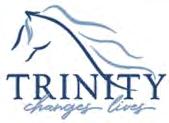
with the beneficiary to get copies of the documentation to submit to the Office of Inspector General for possible investigation. And in this case, there was an investigation, and this CEO will be spending some time in prison for healthcare fraud.
All reports matter! Please don’t hesitate to contact us if you think something is suspicious with your Medicare statements. We are here to help!
Here’s how you can reach us: Call: (888) 818-2611
E-mail: smp-wi@gwaar.org

Website: www.smpwi.org
Facebook: @WisconsinSeniorMedicarePatrol
If

Healing isn’t forgetting what happened. Healing is making sense of the past, so you can feel confident living in the present, and looking hopeful towards the future.

Every day as your pet ages, they become more susceptible to osteoarthritis. It is an extremely common illness among cats and dogs, and can be very painful for your pet to endure and for you to watch.

Symptoms and reasons for joint pain vary from animal to animal:
Symptoms of joint pain
• Trouble rising from lying down
• Unwillingness to jump
• Avoids climbing stairs
• Doesn’t run after toys
• Becoming anti-social
• Loss of appetite
• Aversion to being touched
Reasons for joint pain
• Age
• Breed
• Genetics
• Recent trauma or hospitalization
• Obesity
There are several ways you can try to help ease your pet’s joint pain, but please speak with your veterinarian before making any changes to determine what is the best course for your specific cat or dog.
1. Manage and maintain a healthy weight. According to the Association for Pet Obesity Prevention, almost 60% of dogs (over 50 million) and cats (over 55 million) in the United States are classified as overweight or obese. Obesity stresses the joints and causes bones to move abnormally, which, overtime, leads to decreased
cartilage between joints. To manage your pet’s weight you could make changes in food products, amount of food, and increase the amount of exercise your pet receives.
2. Provide regular exercise opportunities. Not only can this help with obesity, but regular exercise can get those stiff joints to loosen up a bit. Arthritic dogs should get an hour of moderate exercise per day, broken up throughout the day (i.e. a walk, gentle tugging on a toy, easy tricks). Cats need at least five minutes of playful interaction per day with a toy or chasing a laser pointer.
3. Add supplements to your pet’s diet. Talk with your vet about adding anti-inflammatory supplements containing omega-3 fatty acids, undenatured type II collagen, or green-lipped mussels. You can also look for foods fortified with fish oil. Something to note: contrary to popular belief, glucosamine chondroitin has NOT actually been proven effective at easing joint pain in pets.
4. Introduce pain management medication or techniques. The nonsteroidal carprofen and meloxicam have produced promising results in easing joint pain. Some studies also suggest an oral CBD can be effective. Other non-medication options include hydrotherapy, acupuncture or laser therapy.
Source: Golden, Caron. “4 Ways to Ease Your Dog's Joint Pain, According to a Veterinarian.” Eating Well. August 18, 2021. https://www.eatingwell.com/ article/7914451/how-to-help-joint-pain-dogs-cats.


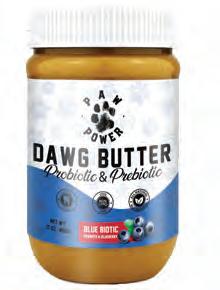
Better for your dog than human peanut butter! Most peanut butters have additives to make them taste good to humans such as hydrogenated oils, salt, sugar, etc. Some even contain xylitol which is toxic for dogs. Dawg Butter is just pure unsalted, non-GMO peanuts plus a little honey. Dogs go crazy for it! Use it to give medicine or as a treat. Stir and refrigerate for the best consistency. Dogs drool over the delicious taste and smell, they will come running when they hear the jar open.
pawpowernutrition.com

Our engines are powered by our passion for dogs.TM
Building a lifelong bonded relationship with your dog is a journey that we are devoted to help you create and sustain. Our staff comes from a variety of backgrounds, which allows us to offer so many things under one roof. We all share one thing...we dig dogs.


 By Becky Streeter
By Becky Streeter
Puppies are a lot of work, and they can seem like even more work if you are not getting the proper amount of sleep because you are up with them at night. Puppies need to sleep between 12-20 hours per day, and you want to make sure a good chunk of that happens when you are sleeping, too. Here are some tips for sleep training your puppy:
1. Purchase a properly sized crate and keep it in your room for at least the first few weeks. Having a safe and secure place will be comforting to your puppy who is likely scared because he is in a new location and misses his mama and siblings.
2. Place a cozy bed with raised sides or blanket that smells like you in the crate for your puppy to snuggle. Ensure all your dog bedding is washable in case of an accident.
3. Create a “bedtime” routine. For example: feed the last meal at least three hours prior to bedtime for optimal digestion, go for a walk, and gently play for a few minutes to get that last bit of energy out. Dogs thrive on routine and quickly learn the meaning behind certain cues.
4. Sleep when your puppy sleeps. If you put your puppy to bed and then make noise throughout the house, your puppy will have a hard time settling down. Going to sleep at the same time creates a quiet, calm atmosphere and prepares you for a potentially long night of potty breaks or an early, excitable morning. If you are unable to go to bed at the same time, you can try a Snuggle Puppy, which has a ‘real feel’ heartbeat that simulates sleeping with a litter.
5. If your puppy is crying at bedtime, let him outside to go potty–one time only. If you repeatedly let him out, he will learn that all he has to do is cry in order to stay up later. If he just went out, he’s looking for a little love and affection. Comfort him with a gentle reassuring voice or sit quietly by his crate until he falls asleep.
6. If your puppy cries in the middle of the night, take him outside to go potty. Puppies need to relieve themselves every 2-4 hours, and including in the middle of the night. Be as quiet and calm as possible while bringing your puppy outside, and then head right back to the crate without a fuss.
1. Do not put toys in your puppy’s sleeping area that could be choking hazards if torn apart.
2. Once in the crate, don’t interact with your puppy in a way that might excite him or be interpreted as playful.
3. Never punish your puppy for crying or having accidents at night. Positive reinforcement and praise for doing good things will get you the desired outcome a lot faster and will build a much stronger bond between you and your puppy.
Source: Gollakner, Dr. Rania. “How to Get Your Puppy On a Healthy Sleeping Schedule.” PetMD by Chewy. 10 February 2023. https://www.petmd.com/dog/ general-health/puppy-sleep-schedule.



All dog owners have been there: You’re on a quiet walk down a lovely paved path near a pond, when suddenly, the sidewalk in front of you is literally covered with goose poop bombs. Before you even realize it, your dog is already helping himself to a nice, juicy (or baked) afternoon snack. Gross!
Eating poop, sticks and grass is very common for dogs. Some believe this is linked to a nutrient deficiency, but there isn’t research to support that thought. It’s truly just dogs being dogs.

Poop smells like food. As mentioned above, your dog probably thinks it is a special treat just laying around for easy pickings. Although dogs have specific preferences when it comes to food, most will eat anything if given the chance, and poop is no exception. Try to limit this habit if possible to ensure your dog doesn’t develop any illnesses that might be cooking on those feces such as E. coli, Salmonella or worms.

Sticks are fun to crunch, but you have to be careful with this one. Small or large pieces can get lodged in your dog’s throat and could do some serious damage. If you notice your dog eating lot of sticks, try to encourage safe chew toys or bones instead. You can even have toys and bones that specifically stay outside for your pet to munch when they feel so moved.

Grass is kind of a double edged sword. Some attribute it to being able to settle a dog’s stomach, but it can also have the inverse effect of ensuing vomiting if eaten too much or too often. Some dogs just eat grass because it tastes good. If your dog does eat grass, be careful that it is not treated with chemicals or pesticides. Generally, unless it’s your own lawn, try to keep your dog from having that green side salad.
Dogs are dogs, and you can’t change what smells or tastes interesting to them. But, you can help them make safe and healthy choices. That way everyone wins!

Science is always trying to learn more about the brain and what makes it healthier. The brain controls every part of our lives and bodies, thus everything we do or don’t do has an impact on the brain. Below are some of the current trends for brain wellness.
Nutrition: Research from Harvard Medical School shows “that the most important strategy is to follow a healthy dietary pattern that includes a lot of fruits, vegetables, legumes, and whole grains. Try to get protein from plant sources and fish and choose healthy fats, such as olive oil or canola, rather than saturated fats.” These foods protect both your heart and your blood vessels, as well as being great food for your brain. (Check out the sidebar from Harvard Health: “5 Foods Linked to Better Brainpower.”)

Exercise: Staying active helps keep your brain active. For example, which do you think provides more brain stimulation: watching a movie, or taking a walk? You might be watching the world’s most educational movie, but your body is just sitting there. If you go for a walk, even just a short one, think of how much activity is going on in your brain and body–you are noticing everything around, perhaps stopping to speak with a friend, or listen to the birds sing, and blood is circulating throughout your entire body while your muscles get a workout. Try adding exercise “snacks” to your routine: nuggets of time, it can even be seconds to minutes, where you intentionally move. Feel free to snack as often as you’d like!
Sleep: Getting quality sleep is essential for good health as it gives the brain a chance to recharge and the body the opportunity to heal. Most of us don’t get the amount of sleep our bodies need. Thankfully, there are all sorts of new tech gadgets out there to help us sleep better:
Whoop Wristband - A vibration system that will wake you at the optimal time based on your sleep needs and cycles. It can also monitor and record key vital signs.
By Becky StreeterOura Ring - Senses what your body needs in terms of sleep, stress levels and physical activity, and makes recommendations based on stored data. Eight Sleep Mattress/Pad - The temperature continually adjusts throughout the night on each side of the bed based on each individual’s sleep needs. Apollo Wristband - Monitors key vitals that sense stress and softly pulses with vibrations to calm the body down, even at night while you sleep.
Or, if you’re old fashioned, just work on going to bed when the sun goes down and waking up when it rises.
Source: Araya-Fischel, Ximena. “From Brain Health To Sleep Syncing: What’s New in Wellness.” Next Avenue. 9 February 2023. www.nextavenue.org/5-wellness-trends-in-2023.
“Foods linked to better brainpower.” Harvard Health Publishing - Harvard Medical School. 6 March 2021. https://www.health. harvard.edu/healthbeat/foods-linked-to-better-brainpower
KIWI could be the ultimate pre-bed treat. Studies show people who ate two kiwis an hour before bed, slept almost a full hour longer than those who didn't. Kiwis are full of vitamins C and E, serotonin and folate - all can help you get your zzz's.
SOYFOODS such as tofu and edamame are rich in isoflavones, which increase the production of serotonin. Those who ate two or more servings of soy a day slept longer and reported a better quality of sleep.
FIBER-RICH FOODS could be key for sleeping better. Fiber prevents a surge in blood sugars that may lower melatonin. Get a boost of fiber from artichokes, quinoa, and bran cereal.
E-BOOK READING
Reading before bed is good - reading from electronic books is not! The blue light can suppress melatonin.
NEW ENVIRONMENT
Sleeping somewhere new is called first-night effect. Bring something you usually sleep with to make the room feel familiar.
A FULL MOON Moon madness is a real thing! Make sure your blinds are drawn to keep out the extra light.
Many people let their pets sleep with them. Whether your cat or dog hurts or helps your sleep depends on your pet's temperament, there is no definitive rule. There are some other things to consider, too. Make sure your pets are up to date on their vaccines. Some diseases can be passed from pets to people. Also, good grooming can help keep you from getting things like poison ivy from your pet. From a behavioral perspective, pets should only be allowed on the bed by invitation.
WOMEN WHO REPORT BETTER SLEEP WERE 33% MORE LIKELY TO HIT THEIR WEIGHT LOSS GOALS.
Check out these awesome products we’ve been using to help us get our zzz’s!
1 | BONOWELLNESS
BonoSleep™ - is the only patented handheld sleep aid device, which uses heating and electrotherapy stimulation that is scientifically proven to help with insomnia and anxiety. Small micro-current waves pulsing from it through your hand to the brain tell your nervous system to relax. bonowellness.com

2 | QUIETON 3.1
Sleep Earbuds - Improve your sleep quality with these active noise cancelling sleep earbuds. They effectively reduce sounds disturbing your sleep, delivering a peaceful night so you can begin each day with a fresh mind. Comes with soft and comfortable eartips in different sizes. quieton.com

3 | ELI & ELM Cotton Side Sleeper Pillowspecially designed to support side sleepers while conforming to the precise contours of the head and neck. Their carefully engineered latex and polyester fiber filling, combined with the cotton and polyester cover, creates maximum comfort and breath-ability. eliandelm.com

Go to their websites to see all the other products they offer for a good night’s sleep

4 | CYMBIOTIKA
Magnesium L-ThreonateBoost brain power, balance mood and calm central nervous system, and improve memory. Sleep - May calm nervous system, promotes relaxation, and encourages a deep restful sleep. cymbiotika.com

5 | RAW BOTANICS
REST & Refresh | Reishi Mushroom & Hemp TinctureNon-habit-forming sleep aid, melatonin-free, for deep, restorative sleep. Soothing Pillow Mist with Hemp, Lavender, and EucalyptusCreate a spa-like environment with instant calm that may help ease stress, find your center, and sleep better. rawbotanics.com
“I’m tired….” It’s a refrain I hear in my chiropractic office from both young and old (though sometimes it’s BECAUSE of the young that the “old” are tired!). There are a lot of factors that play into whether we have a good night’s sleep. Here are some helpful suggestions to get and stay asleep:
• Avoid too much or late intake of caffeine
• Limit alcohol consumption before bed
• Avoid late-night snacking (stop eating 3 hours before bed)
• Avoid screens and electronic devices at least 30-60 minutes before bed
• Exercise/move your body 30 minutes daily
• Follow the sun for sleep/wake times
• Keep your bedroom a peaceful place…if this is not an option, due to kids/pets/partner/spouse, just make it a point to do the other above suggestions as best you can!
Aside from the last item from the above list, the most common reason I hear from adults as to why they didn’t sleep well is pain. This could be from a variety of sources, but often it’s pain in the neck or low back that interferes with the ability to find a comfortable position. Since sleep is necessary in order to heal, it’s even more important that those with neck or back issues are able to get the rest they need.

If we look at pain as your body’s way of trying to tell you that something is wrong (rather than something that needs to be covered up), it makes sense to look into the option of trying chiropractic as a way to eliminate or reduce the pain symptoms. Chiropractic care addresses the position of the spinal vertebrae in relation to other vertebrae, discs, nerves and muscles. A misalignment of these vertebrae can lead
to pain, and a chiropractic spinal adjustment can help to relieve the cause of that pain.
How you sleep also matters, including having a mattress that is supportive and neither too hard or too soft. The ideal sleeping position, to avoid unnecessary pressure points or twisting within the spine, is to lie on your back, with support under the neck and knees. Side-sleeping is also an option, but make sure to support the space between the ear and outside edge of the shoulder (in order to keep the head in line with the rest of the spine) and use a pillow between the knees (to help hold the pelvis in proper alignment as well). You may have noticed that I didn’t yet mention stomach sleeping, and that is because it would be ideal to avoid this position (due to the excessive one-sided rotation of the neck and typical elevation of one arm overhead). If you must sleep on your stomach, it’s best to lay half side/half stomach with the support of a body pillow underneath you. This will help lessen the negative effects of this sleeping position.
Chiropractic care for babies and children can also be beneficial in ensuring proper sleep for the whole family. Unlike adults, spinal pain is not typically the cause for kiddos waking in the night. Symptoms of growing pains, constipation/gas, headaches, ear pain and frequent illness are often what I hear from exhausted parents. These are all issues that typically improve with the addition of chiropractic care. In fact, I often witness the resolution of constipation before the family is even able to leave the office. It’s also common to hear that children sleep much better after their chiropractic adjustment, which is great because it means that while they are sleeping, their body is able to grow and heal!
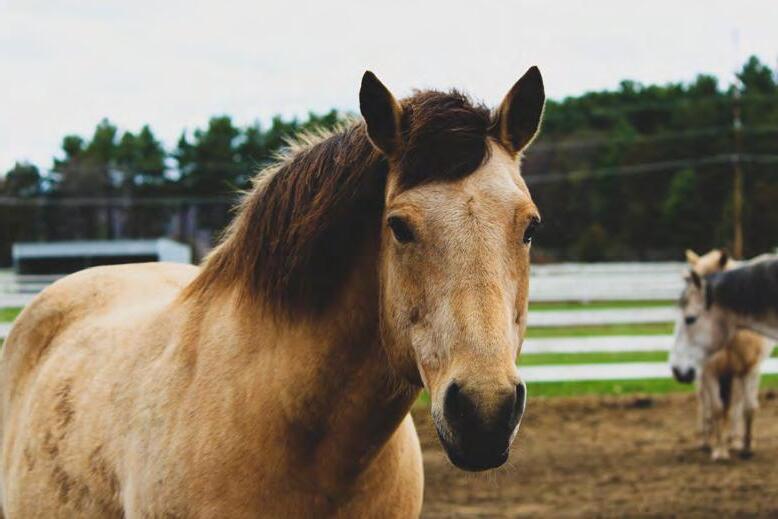
 By Becky Streeter
By Becky Streeter

Trinity Equestrian Center has been changing lives for over twenty years through Equine Assisted Therapy, Youth Mentoring, therapeutic riding, and trainings. Their vision from day one has been to make a difference in the health and growth of their community members. With that goal ever present in their minds and business model, Trinity has kicked off their next chapter with a new Executive Director and Board President, Ian Mattson.
Mattson started working at Trinity when his family purchased the horse ranch in 2002. Their goal was to transform it into a non-profit that would help Veterans, youth and families in the area that were in need. “I have always been incredibly invested in Trinity and its mission,” Mattson says. After a number of years working at Trinity, he and his wife Rachael spearheaded a new branch in 2009, the Trinity Mentoring Program. What started as a part-time job with only one child to mentor quickly grew into hundreds of mentoring sessions per month. Two years into the program, Mattson began working full time as Director of Youth Development where he helped Trinity thrive for twelve years, and has since added a second youth development program: Trinity Workshops.
Ready to take the next step, the promotion to Executive Director of Trinity brings new challenges and responsibilities that Mattson is excited to tackle. While he’ll manage the care of the animals, property and facilities at Trinity, and a lot of administrative duties, he is most excited to oversee staff and volunteers. “One thing that makes Trinity unique is the amazing group of people that make it up,” Mattson says. “They make Trinity such a welcoming, positive and friendly place to work and get help, and we truly couldn’t do what we do without each person.”
Though he’s new to the position, Mattson plans to stay true to Trinity’s roots, ensuring the programs and organization as a whole continue making a positive impact on the community. They are hoping to provide more free therapy sessions for Veterans and their families. Mattson says, “Toni, Bill and Jan, Trinity’s Founders, cultivated an
Mattson’s also wants to increase awareness and accessibility of the Youth Development Programs. He plans to add more scholarships for kids and families who may not have the funding necessary to be in the programs. “We love working with kids!” Mattson exclaims. “They are the future, and their story is important. We see so much untapped potential in them. We believe that empowering, inspiring, and challenging them leads them to discovering that untapped potential and is truly impactful to the local community and the world.”
One of Mattson’s favorite things about Trinity is seeing the joy and peace that people in their programs experience. Mattson states, “We are here to serve, to help heal, to navigate unknown waters, and to work through challenges. When we make progress and forge ahead, we get to see and experience the pure joy and smiles that come with it, making the whole journey worthwhile.”
Mattson’s desire as the new Executive Director is to continue to provide more and higher quality service to those they serve, and he is really looking forward to the future of Trinity. “Rachael and I are honored to care for all of these pieces of God’s creation, and we try to be better every day.”
 By Joyce Sobotta
By Joyce Sobotta
Joyce is a published author of “Breast Health Is in Your Hands, Tips for Breast Vitality and Sensuality” and founder of an international business, HealthyGirlsBreastOil, a unique effective essential oil blend for breast health. She offers consultations for natural breast health. www.aromatherapynatureway.com

When heavy metals and toxins accumulate in the body, the six organs of detoxification work to eliminate them and then reinstate health to the body.
The Liver filters blood and sends the waste material to the colon. If the body is dehydrated and the colon cannot flush correctly, it sends the waste back into the blood, then through the liver again, and then back to the colon. It is a vicious circle, and the liver becomes overworked.
The liver also becomes challenged with too little sleep or too many hydrogenated fats in processed foods, fried foods and desserts. Foods that are supportive of liver detoxification include cabbage, broccoli, garlic, beets, salad greens, lemon and lime juice, and green apples.
The Kidneys flush waste and toxins from the blood by turning it into urine after it’s cleaned by the liver. To support detoxification, drink at least one half your body weight in ounces of water daily. Consume organic greens, herbs, and teas which promote kidney detox.
Some foods flush the kidneys and promote healthy blood pressure, while others act as renal tonics to flush extra toxins and prevent bacteria buildup. These foods are parsley, cilantro, green tea, nettle, alfalfa, cranberry, dark cherries and juniper berry.
The Lungs are responsible for filtering out carbon dioxide, fumes, molds, allergens, and airborne toxins. They work to detox by simply breathing and exhaling deeply. The lungs and respiratory system expel toxins through sinus drainage or coughing. Sleeping soundly also promotes lung detox. Foods with spicy/pungent flavors and slippery/soothing textures are best for lung detoxification such as mustard, turnip, radish, wasabi, and cayenne.
The Lymphatic System removes byproducts of infection, as well as bacteria, viruses, and other pathogens. Lymph nodes, found in chains throughout the brain and body, can become tender and swollen when an infection is being cleared. These lymph cells are picked up by tiny bloods capillaries and filtered through the spleen and
thymus gland. The lymph system requires movement to function well.
Stimulate lymph flow with cardiovascular exercise, sweating, and massage. Encourage lymph movement by tapping ten times on your sternum (the thymus gland is behind your sternum). You can also promote lymph detox by gently using a natural bristle brush or sea sponge and brushing your skin in a circular motion. Foods that help the lymph detox are ginger, turmeric, lemon, lime, grapefruit, seaweeds and garlic.
The Colon excretes solid waste so that it’s not recirculated into the bloodstream. It also houses protective bacteria that make up the body’s ecosystem, called the microbiome. Help detox the colon by increasing your intake of soluble and insoluble fiber and water. Foods that are beneficial for the colon are lentils, flax seeds, chia seeds, sauerkraut, kimchi, kombucha, kefir, apple cider vinegar, squash, apples, plums, prunes, pears, sweet potatoes, beets, turnips, onion and garlic.
The Skin is the largest elimination organ, always exchanging oxygen and waste. When the other detoxification organs are overwhelmed and not working properly, toxins will come out through the skin. Symptoms like hives, rash, psoriasis and eczema can develop from not being able to eliminate toxins. All forms of detox benefit the skin, especially exercise, dry skin brushing, Epsom salt baths, and infrared saunas.
Reduce overall “body sludge” to give the body a lift. The organs of detoxification thrive on foods that benefit them. Always ask, “Where did this food come from and how will it benefit detoxification?”
Excerpt from “Breast Health Is in Your Hands”
Chapter on Nutrition and Digestion
Cell: 715-828-0117
joyce@aromatherapynaturesway.com
aromatherapynaturesway.com

“You did not fail. No woman ‘fails’ to breastfeed. They are failed by a system that fails to support them, both during breastfeeding and when they cannot. And that is what we are going to change.” ~ Dr. Amy Brown, Why Breastfeeding Grief & Trauma Matter
I am an International Board Certified Lactation Consultant in private practice. Supporting families in their infant-feeding journeys is what I do. I LOVE it and consider it an honor and privilege.
But you know what I don’t love? I don’t love apologizing for things that were not my fault. These mothers deserve an acknowledgement, explanation, apology for how the system let them down. I hear their disappointment, pain, and anger; I am grateful to be trusted with their vulnerability.
We say: “Breast is best!” … “Everyone can breastfeed.” … “Breastfeed for a year – wait, make that TWO YEARS – since it is ideal for baby!” (new AAP guidance as of 2022).
And oh my, do they try. They WANT TO. I see lactating parents regularly who damage their bodies, mental health, relationships … all in pursuit of supplying breast milk to their babies.
I’m a big fan of human milk. It’s literally amazing stuff. AND, I say on repeat, “BRAINS OVER BOOBS. Period.”
Nothing, no matter how magical, is worth sacrificing the wellbeing of our mothers. Because when mothers are not okay, families are not okay. Just because breast milk is ideal for infants doesn’t necessarily mean it’s ideal for every mother.
A whopping 87.5% of infants in Wisconsin in 2019 were “ever breastfed.” Our Minnesota neighbors in the same year had 91.9% of infants in the same category (CDC Breastfeeding Report Card).

These high initiation numbers show that feeding their baby from their body is important to many. (Not all, and that’s okay, too. No judgment. There are ALL kinds of reasons people do what they do, and I believe the only correct response is empathy and an offer of tangible help.)
But for those who find breastfeeding an important goal, it’s time we acknowledge that society sets them up to fail …
They try, and …
- the family leave they have before returning to work is abysmal.
- their insurance coverage for lactation care is minimal or inaccessible.
- they can’t get a lactation appointment for weeks sometimes, if they can get one at all.
- they receive side-eye for nursing in public.
- they are given a breast pump with no instructions on how to use it or get properly sized flanges, so they don’t traumatize their tissues and end up with permanent damage.
- baby’s caregiver over-feeds baby by bottle so it appears they can’t keep up with baby’s needs.
- their employer is supportive in word only.
- formula companies undermine their efforts with predatory marketing toward families AND their healthcare providers.
- their provider brushes off lactation concerns with, “Just keep trying – it will get better next week,” or “No big deal, you can just top off with formula.”
So, what to do? We start where we can: acknowledge the systems failures and teach families to advocate for their needs; push for greater protections for lactating parents in the workplace; and prioritize mental health therapy for everyone.
We MUST get better at helping parents process their postpartum experiences and grief. The reality is, even the most straightforward birth or infant-feeding journey can include traumatizing elements; only the individual doing it gets to decide.
For my part, I’m leading my Mama Bear team members through a study on Dr. Amy Brown’s book, Why Breastfeeding Grief & Trauma Matter, and we are processing through our own infant-feeding stories together and with a licensed counselor. We’re committed to helping families before, during, and after their infant-feeding experiences, so we’re working on our own healing first. Not easy, but essential.
I’m also honored to meet with parents who are expecting again after a rough experience with infant-feeding the first time around. Gently leading them through a Prenatal Breastfeeding Consult can be eye-opening and healing.
More offerings coming soon from Mama Bear Family Care for parents who are ready to dive into their own restoration on this subject. Additional resources I recommend include Postpartum Support International (www.postpartum.net), where you can find a therapist certified in Perinatal Mental Health, as well as the book Healing Breastfeeding Grief by Hilary Jacobson.


Breastfeeding grief is real, painful, and healable. My heart is with you if this is for you.



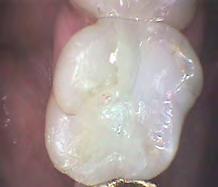
Jennifer Hafele, aka “Mama Bear”, is an International Board Certified Lactation Consultant in private practice who is active in the Chippewa Valley birth and postpartum care community. She provides professional lactation support, plus Jennifer loves leading support groups and co-teaching “Confident Birth & Beyond,” Mama Bear’s independent childbirth and postpartum education series. Connect with Jennifer on Facebook or at MamaBearFamilyCare.com.

1. Going to Bed Earlier - Sleep is key for mental and physical regeneration and healing. Following the body’s circadian rhythm–going to bed when it gets dark and rising with the sun–is one of the best trends for 2023.
2. “Distance” Community Workouts - Many people have exercise apps on their phone that connect them to a workout community. These workouts can be done on your own time in your own space, and then the details are recorded and shared with your gym buddies via the app.
3. Exercise Snacks - Little bursts of movements anywhere from one minute to ten or 15 that help break up your day. Your muscles are moving thus pumping blood to your heart and brain to wake you up. You become more efficient mentally and stronger physically.
4. Low Impact Exercise - Yoga, pilates, and stretching are more popular now than before the pandemic. These exercise routines are breath-focused and help center the mind and body.

5. Workplace Wellness - The “Great Resignation” began in early 2021 and saw millions of Americans quitting their jobs for a variety of reasons. In order to keep employees, workplaces are beginning to implement benefits such as fitness centers, nutrition and wellness education, flexible schedules, and stress management programs.
6. Wearable Fitness Tech - 2023 is seeing a rise in wearable tech beyond the Fitbit and Apple Watch. The Oura Ring, Whoop Wristband and Apollo Wristbands monitor your vital signs, key in on stress and or sleep habits, and help manage wellness.
7. Plant-Based Diets - There are benefits for the body and the environment as people move toward plant-based diets. Plant proteins such as black beans, almonds, quinoa and lentils can often make great replacements for beef and chicken.
8. Digestive Health - Eating foods, such as kimchi, kefir and probiotic yogurt, that encourage the good bacteria in your gut helps with digestion. Additionally, immune-boosting foods like ginger, elderberry and garlic will likely fly off the shelves this year, too. These foods help support weight loss goals, reduce risk of illness, and increase mood and brain function.
9. CBD Products - Designed to help reduce stress, relieve pain, aid cognitive function and more, these products are gaining quite the hype in 2023.
10. Sustainability - Many businesses as well as general consumers are searching for ways to be more environmentally friendly. Composting and compostable materials are a huge part of this, as well as buying local, going paperless, and upcycling as much as possible.
11. At-Home Self-Care - Facials in your bathroom with a candle, a book and some music. Doing your own haircuts. Adding a scoop of collagen to your morning coffee.
12. Mental Wellness - Taking care of your brain is a huge trend for 2023. Meditation, therapy, journaling, mental gyms–all of these are on the rise.
Source: Parsons, Lexi. “2023 Wellness Trends We’re Watching.” FitOn. 2023. https://fitonapp.com/ wellness/2023-wellness-trends.
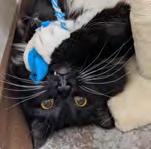 By Melinda Gardner, Executive Director Apple Pregnancy Care Center
By Melinda Gardner, Executive Director Apple Pregnancy Care Center

There’s a company that produces products for babies whose slogan is “Having a Baby Changes Everything.” I think we can all agree that is true! Having a baby is life-changing, wonderful, and exciting, but also scary and overwhelming and much more.
I’m a grandmother expecting our second grandchild and I couldn’t be happier. And when that little girl shows up this summer, we’ll be traveling to meet her and help her parents as needed. We know how wonderful it is to offer support, help with meals, do some laundry, let mama sleep as we can take a newborn for a little time, and much more. Not everyone has that available.
I recently heard a comedian talk about how people tell you to sleep when the baby sleeps. She said, “And should I vacuum when the baby vacuums, and do the dishes when the baby does the dishes, too?” Great point!
Having a newborn is intense and overwhelming and wonderful. I’d like to offer a little bit of help during these times. Know that each baby is different, and each mama is different. Getting advice from other moms can be so helpful, but what works for someone else may not work for you. There are many highs and lows. Women have a rapid drop in hormones right after birth and if you don’t understand this, you can be really surprised by how you feel. Some women can feel sad, and some have much more intense emotions.
Here are some ideas if you’re struggling:
- Ask for help and accept what is offered to you. I’ve learned that when someone asks if they can do something nice for me, you should say, “Yes, thank you.”

- Listen to music that lifts your spirits. Maybe even dance a little.

- Take some time for yourself.
- Go for a walk.
- Call a friend.
- Laugh.
- Snuggle that little one. Sing to her or him. Make eye contact. Play. Time is so precious and so short. Enjoy it.

If you are struggling with fear and anxiety, depression and difficulty after having your baby, please don’t hesitate to reach out for help. Call your doctor. Tell the people around you that you’re struggling. It’s okay to say, “This is harder than I thought.” If you had a high fever, you would ask for help. Postpartum Support International says, “You are not alone, you are not to blame, and with help you will be well.”

The APPLE Pregnancy Care Center is here to support and encourage parents in the Chippewa Valley. We have fantastic lessons on everything pregnancy and parenting. All our services are free and confidential. We’re here for you and you can even get diapers, clothing, formula and much more. Please don’t hesitate to call for help. 715834-5254.
Congratulations! You’re going to love that baby and be such a good mother.
land. At least one study has shown that unmown yards in the city have a number of bees present. voluntary. You can opt to leave the mower in the garage for the month, just unmown, opt out of all lawn chemicals, or do nothing. It’s up to you.
The objectives of the voluntary No Mow May campaign are to challenge property owners to provide a wider habitat for pollinators throughout the growing season. Many native bees, butterflies and moths are in decline and their losses threaten our wildflowers, agricultural crops, and natural areas. Conserving and improving habitats for pollinators is important to us all.
The traditional monoculture lawn lacks floral resources or nesting sites for native bees, and is often treated with chemicals that harm bees and other invertebrates. When we think of habitat loss, we tend to imagine bulldozers and felled trees, but acres of manicured lawn are as much a loss of habitat as these others. Turf grass is devoid of the flowering plants needed to support pollinators. In the month of May, when flowers are not yet blooming, native pollinators begin to emerge and require food to sustain them.
The idea behind No Mow May is to designate a portion of the lawn as a pollinator habitat and not mow or apply pesticides or fertilizer until the month ends. This allows common flowering plants like dandelion, clover, creeping Charlie, and violets to provide food for pollinators when many other flowers are not yet blooming. This is especially important in urban landscapes that do not border open land. At least one study has shown that unmown yards in the city have a fivefold increase in the number of bees present.
No Mow May is voluntary. You can opt to leave the mower in the garage for the month, just leave part of your lawn unmown, opt out of all lawn chemicals, or do nothing. It’s up to you.
To accommodate No Mow May, the City of Eau Claire has changed their lawn ordinance, delaying enforcement until June 1. If you live outside of the Eau Claire City limits, you should check with your governmental entity for their lawn ordinance policies.
Bring Nature Home - Participate in No Mow May
By Jane MohlerMow May, the City of Eau Claire has changed their lawn ordinance, until June 1. If you live outside of the Eau Claire City limits, you should governmental entity for their lawn ordinance policies. end June 1st, it is just the beginning. The long-term to bring nature home and transform your yard into a habitat. Get your NO MOW May yard sign and learn more code.
No Mow May does not end June 1st, it is just the beginning. The long-term goal of No Mow May is to bring nature home and transform your yard into a pollinator-friendly habitat. Get your NO MOW May yard sign and learn more by activating the QR code.
The objectives of the voluntary No Mow May campaign provide a wider habitat for pollinators throughout butterflies and moths are in decline and their losses and natural areas. Conserving and improving habitats
The traditional monoculture lawn lacks floral resources often treated with chemicals that harm bees and loss, we tend to imagine bulldozers and felled trees, loss of habitat as these urf grass is devoid pollinators. In the month of May, when flowers are emerge and require food to sustain them.
The idea behind No Mow May is to designate a not mow or apply pesticides or fertilizer until the plants like dandelion, clover, creeping Charlie, and many other flowers are not yet blooming. This is do not border open land. At least one study has fivefold increase in the number of bees present.

Thai On The Table
No Mow May is voluntary. You can opt to leave leave part of your lawn unmown, opt out of all lawn




To accommodate No Mow May, the City of Eau delaying enforcement until June 1. If you live outside check with your governmental entity for their lawn
No Mow May does not end June 1st, it is just the goal of No Mow May is to bring nature home and pollinator-friendly habitat. Get your NO MOW May by activating the QR code

After the cold and snowy winter we’ve had, we’re all looking forward to spring and summer, and so are the mosquitoes and bugs. Most of us don’t care for choking on the fog from traditional spray repellents, or the scent it leaves on our skin and clothes. Thankfully, there’s an easier way to keep those pesky pests at bay: natural landscaping. Whether you plant them in the ground all around your home, or keep them in pots, the following are six plants mosquitoes and other bugs tend to avoid.

1. Citronella - Citronella is actually a grass that can be planted in your yard. It grows up to 6 feet tall by 6 feet wide, so plan accordingly. It also prefers partial shade or dappled sun.
2. Lavender - Mosquitoes detest the scent of lavender, and on the flip side, pollinators love it. It’s a win-win! Deer also tend to avoid this plant. Sow 2-3 feet apart in direct sunlight and water twice a week.
3. Marigolds - Easy to plant and maintain, this is a fan favorite as it repels many different types of bugs. Plus they look pretty all summer long and into the fall.

4. Nasturtiums - These cute, fragrant and colorful little flowers draw pests away from other flowers and vegetables while simultaneously enticing pollinators. They are also edible, with a peppery or mustard-like taste. They prefer full sun.
5. Basil - A few scientific studies have found basil to be highly toxic to certain varieties of mosquitoes. It’s an easy addition to your garden, or pots, and is great to toss in meals while cooking.
By Becky Streeter6. Mint - Mint contains menthol, an active insect-fighting ingredient. The plant grows quickly and spreads even quicker, so keep it in a pot if you want to control it. Mint, like basil, is also a great herb to have handy for cooking.
Additionally, if you are looking for a natural, topical mosquito repellent, studies have shown clove oil to be a great option. The tropical clove tree isn’t suited to the midwest growing season, therefore oil is your best bet. Lab tests have continually shown a 100% efficiency rating with clove oil for over a decade. Large doses can be irritating to the skin, but it is safe to use topically in a concentration of 0.5% or less.
Source: • Ball, Jessica M.S., RD. “7 Plants that Repel Bugs and Mosquitos.” Eating Well. 17 February 2022. https://www.eatingwell. com/article/7947914/plants-that-repel-bugs-and-mosquitos. •“How to Plant, Grow, and Care for Nasturtiums.” Farmers Almanac. 10 February 2023. https://www.almanac.com/plant/nasturtiums. •“Plants & Herbs as Mosquito Repellents.” Mosquito Reviews. https://mosquitoreviews.com/mosquito-repellents/plants.



Native plants provide many benefits for people and wildlife, while contributing greatly to healthy soil and water. Native plants have adapted to the climate and soils of our mid-western region for optimal durability and offer the most sustainable habitat for birds, insects and wildlife. A plant is considered native if it has occurred naturally in a particular region, ecosystem, or habitat without human introduction.




Vast amounts of fertilizers are applied to lawns and non-native gardens. Excess phosphorus and nitrogen (the main components of fertilizers) run off into lakes and rivers causing excess algae growth. This depletes oxygen in our waters, harms aquatic life and interferes with recreational uses. The overuse of a limited number of non-native plants in gardens has produced a homogenized landscape susceptible to pests and diseases, requiring the increased use of pesticides. Nationally, over 70 million pounds of pesticides are applied to lawns and gardens each year. Pesticides can also contaminate rivers and lakes. Native landscapes provide habitats for wildlife and encourage the presence of native insects and microorganisms. These native organisms benefit plants by keeping them healthy without the use of chemical fertilizers and pesticides. Native plants have a symbiotic relationship with the environment.

One gas-powered lawnmower emits 11 times the air pollution of a new car. Excessive carbon from the burning of fossil fuels contributes to global warming. Natural landscapes do not require mowing or very much maintenance at all.




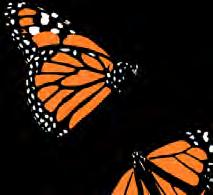
In the U.S. there are approximately 20 million acres of lawn, covering more land than any single crop. There are very few benefits to native wildlife from a manicured lawn. Likewise, gardens that mostly feature non-native species of plants are often of little benefit to wildlife. Native plants attract a variety of birds, butterflies, and other insects and wildlife by providing diverse habitats and food sources. Natural landscaping is an opportunity to reestablish diverse native plants, thereby inviting the birds and butterflies back to your yard.
The non-native gardens and lawns require significant amounts of water to thrive. The deep root systems of many native mid-western plants increase the soil’s capacity to store water. Native plants can significantly reduce water runoff and loss of topsoil to erosion.

Once again, the staff at Together Farms is hard at work, prepping for summer, and this year they are introducing their brand new Farm Store! You literally have to walk right past it to get to the Burger Night area, so if you plan to head over there for a burger this summer, it will be easy to pop in and take a peek at what they’ve got going on.
Even though it’s still under construction (in multiple senses of the phrase), Stephanie Schneider, co-owner of Together Farms, is very excited about the progress and potential of the Farm Store. The physical space is much larger and more efficient than their previous setup, with the retail at the front of the store, offices in the back, and supplies for shipping and local deliveries in the back and basement. Aesthetically speaking, they used reclaimed materials from Dell’s Architectural Antiques for many parts of the building–for example, the ceiling is from an old mink farm that was taken down. Schneider says they already have some good stories about the building process–make sure to ask about the “incident” with the flooring when you stop by this summer.
The retail side of the store is coming along as well. Together Farms has been in discussions with over 50 businesses and local artists to sell their products in the store. In
MAY 11-14: Rise & Shine Burger (croissant bun, egg, syrup drizzle, etc.) featuring their maple syrup farms
MAY 18-21: Spotted Cow Burger featuring New Glarus in the store

JUNE 15-18: Big Papa Burger (Father’s Day weekend) featuring Croix Valley BBQ
JUNE 21-25: The Bees Knees Burger (Pollinator week!) featuring all things honey and beeswax, fun talks with beekeepers, and beeswax wraps from local seller Dakota Wellness
JUNE 29-JULY 2: Howdy Hippie Burger (in honor of Blue Ox hippies and Country Fest cowboys) featuring Farm Doc Microgreens
JULY 20-23: We Brie Jammin’ Burger featuring AVEnue Orchard
JULY 27-30: Murder Burger featuring Seaquist Orchards cherry sauce and in honor of their first Murder Mystery party on Wednesday the 26th (tickets for this are available on the calendar page of the website)
conjunction with this, each week Together Farms will have a Store Spotlight, where they feature a business in tandem with the Burger of the Week. Burgers will be announced on the calendar page of their website as soon as the staff knows what they will be, and then the “spotlight” business will come to the farm on their featured weekend for a meet and greet and sampling offers, and they will likely have additional items from their product line for purchase. Schneider says, “We’re trying to build community and make connections. Plus, now folks have another reason to come back every week and try some new, exciting things and meet other local producers while they’re here.” A few events are already planned, see list below.
The Store Spotlight is a great marriage between Burger Night and the Farm Store. Schneider states, “Our goal is not to be a food co-op or to create a tourist trap–we just want to carry the products that complement our meats (and make for easy meals) and that our customers want. It will very much be driven by demand, so there may be a lot of ‘evolving’ and testing the first year or two. Any feedback will be very valuable!”
The Store is set to open to the public this summer with a Grand Opening TBD, so keep your eyes open for that, because it’s going to be awesome.
For more information about Together Farms products or Burger Nights, check out their website at togetherfarms.com.

Whenever you come in for a thermography screening, you are given a fair amount of paperwork to complete, including health questionnaires and HIPAA forms. The thermographer then goes through the same list of questions with you for clarification and to capture new information, fill in any missing information, and note any updates in symptoms and treatments, even if the information does not seem to apply.
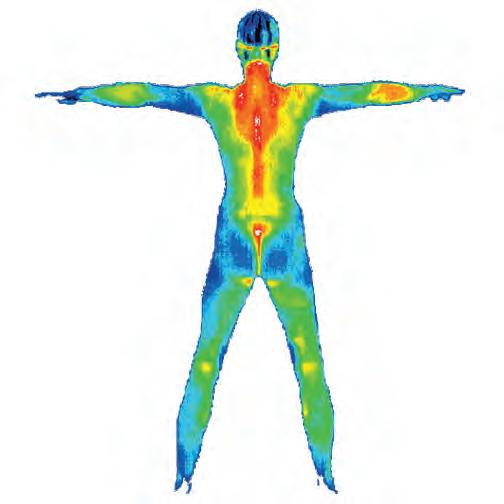
Our bodies are complex and all systems are interrelated. Therefore, complete and accurate information is needed by the thermologists and doctors who interpret the images and provide the written report:
• Symptoms provide clues about any dysfunction
• Dates of treatments, doctor visits, illnesses, surgeries and injuries are important as they may affect the images
• Any therapeutic treatment should be noted—dental work, light therapy, chiropractic, massage, acupuncture, infrared sauna, etc., can affect the nervous system
• Pharmaceutical medications and therapeutic supplements may affect the body’s temperature regulation
• Familial history is recorded because of the potential for disorders and dysfunction to be passed down to the next generation
Why is all this documentation so important? Well, blame the autonomic nervous system and its control of the body’s response to stress.
The autonomic (think “automatic”) nervous system, which is the part of the peripheral nervous
system (nerves which branch off the spinal cord), controls the involuntary functions of the body, such as your heart rate, respiration, digestion, blood pressure, and sexual arousal. It is comprised of two main divisions: the sympathetic (SNS) and parasympathetic (PNS) nervous systems.
As a quick review, the SNS controls your body’s “fight or flight” response, and the PNS system controls your body’s resting, digestion and sexual arousal. The number one job of the sympathetic system is to control your core body temperature by either increasing or decreasing the blood
The body is in a constant state of balance, or homeostasis, and the skin is an important part of that temperature regulation process. Thermography, which measures the skin surface temperature, is a very sensitive test of the presence or absence (stress, dysfunction and disease) of
When the documentation supports the thermal images, the thermologists can provide a better interpretation and written report which, in turn, provides the patient and care practitioner better information for support and treatment.
And that is why the thermographer wants to know what is going on.




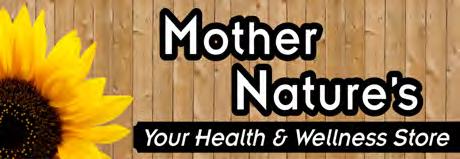


Parent’s guide to summer camp, day activities, classes, and events from sun up to sun down!

JUNE 5 - JULY 22
• Sign up for the summer reading program starts May 30th.

• Open to all children 11 years (or students entering grade 6) and younger.
• Join in on weekly story time sessions, LEGO club, school age book club, family evening entertainment, children’s movies, chess club, and more.
• The library welcomes children of all abilities and all programs are FREE of charge.
• Contact the library for more information on the Children’s Summer Reading Program , the Teen Reading Program (students entering grades 7-12), or the Adult Reading Program.

MONDAY EVENING 6:30 P.M. ENTERTAINMENT LINE-UP:
June 5 “Kevin’s Juggling and Balloons” Family Show
June 12 The Magic of Isaiah (La Crosse Magician)
June 19 Mixed Nuts Show (Adrenaline Driven Comedy for the Whole Family)
June 26 Dinosaur Dimensions Show (Educational Animatronic Dinosaur Program)
July 10 Tom Pease (Renowned Children’s Music Entertainer)
July 17 Kid’s Got Talent Show
1303 Lynn Avenue | Altoona, WI
715-839-5029
altoonapl@altoonapubliclibrary.org

www.altoonapubliclibrary.org
Hours: M-Th 9am-8pm; Fri 9am-6pm; Sat 9am-5pm; Closed Sundays
“Let’s go outside!”
Those three little words are music to every parent’s ears. Today, in our always-on culture filled with smartphones, streaming entertainment, online games, and even virtual reality, it’s important that girls make a strong connection to nature and the outdoors.
Getting outside and exploring nature both have benefits that go far beyond what one might expect. These experiences contribute to challenge-seeking and problem-solving skills and make kids more likely to connect with and care for the environment.
Five Reasons to Explore the Outdoors with Girl Scouts this Summer:

1. Build Confidence | When kids are given the opportunity to try new things and push themselves outside of their comfort zones, they develop a sense of self-confidence and resilience that will serve them well in all aspects of their lives. Whether hiking a challenging trail, kayaking down a river, or learning how to build a fire, these outdoor experiences allow them to build confidence in their abilities and trust in themselves.

2. Foster Independence | When kids are out in nature, away from the comforts of home, they must learn how to rely on themselves and their fellow adventurers to navigate unfamiliar territory and overcome obstacles. This independence helps them become more selfsufficient and less reliant on others, an essential skill that will serve them well in adulthood.
3. Develop Leadership Skills | When kids work together to achieve a common goal, whether setting up camp or completing a challenging hike, they learn how to communicate effectively, make decisions, and work as a team. These skills are essential for becoming effective leaders, and the outdoor environment provides an ideal setting for learning and practicing.
4. Cultivate a Love and Respect for Nature | When kids spend time outside, they develop an appreciation for the natural world and learn to live in harmony with it. This love and respect for nature can inspire kids to become environmental advocates, and they may pursue careers in conservation or ecology.
5. Have Fun | Getting outdoors and having adventures is just plain fun! When kids are outside, they can explore, play, and have fun in ways that are not possible indoors. Whether hiking through the woods, roasting marshmallows around a campfire, or stargazing under the night sky, outdoor adventures provide endless opportunities for fun.
Kids love the outdoors, so it doesn’t take much to get them outside and running, climbing, exploring, learning, and having a blast. It just takes a little encouragement from adults and the freedom to explore—and they’ll take it from there!
Find your next adventure with Girl Scouts! Visit gsnwgl.org to learn more.









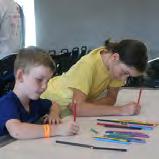














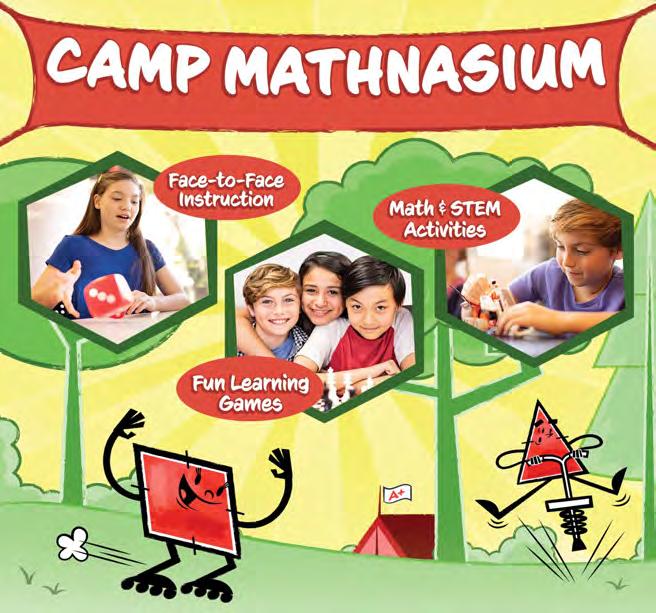


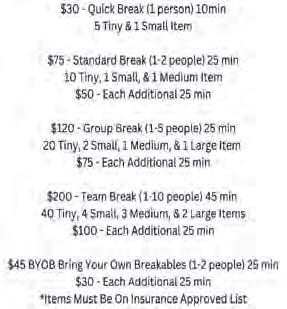



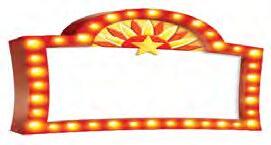







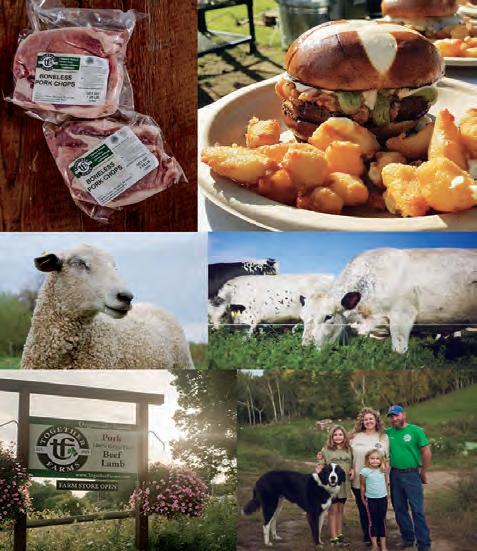



1 2 3 7 8 9


Boosts Your Energy - Exercise is a great energy booster! You’ll notice after a really great workout how much more energized you feel. More energy equals more happiness!
Reduces Stress - Exercise is a form of low-level stress, so the more you subject yourself to it, the more your body will be able to handle other kinds of stress. Stressed out? Time to work out.
Lowers Depression & Anxiety - People can achieve long-term relief from anxiety and depression by exercising because of its mind-boosting benefits.
Better Sleep - Better sleep equals a happier you. Having sleep issues? Regular exercise improves the sleep quality in people with sleep disorders.

Boosts Self Confidence - Seeing your body transform for the better, does wonders for your confidence. A really great workout can lead to an awesome sense of accomplishment.
More Social Interaction - Studies have shown that working out with a partner allows people to do better on aerobic tests. Any type of exercise is great, but working out in a group is even better. And generally being around our friends makes us happier!
4 5 6
More Productive - Being more productive on the job makes us happier people! Studies show more exercise can lead to a more productive work day.
Better Coping Skills - Sometimes in life, when faced with difficult challenges, people turn to alcohol or drugs. To be able to deal with life’s problems, turning to exercise instead helps us cope in a much healthier and happier way.

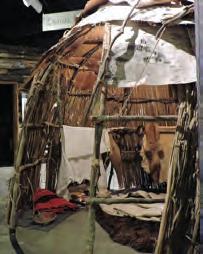
Be More Relaxed - Not only can working out help us sleep better, but after a hard day, exercise can help us unwind and become more relaxed.
Eau

Eau Claire 4 Tomorrow is a 4 year old Kindergarten Early Learning Program offered to all four year olds in the Eau Claire Area School District. * There is no charge for EC4T, however fees may apply for families participating in extended services beyond the EC4T program day.



If your child is 4 years old on or before September 1st, 2023, an Eau Claire Area School District enrollment form must be completed at: www.ecasd.us, click Enrollment at the top of the main page, click Early Learning Programs tab, click on the blue Enroll Now tab.


